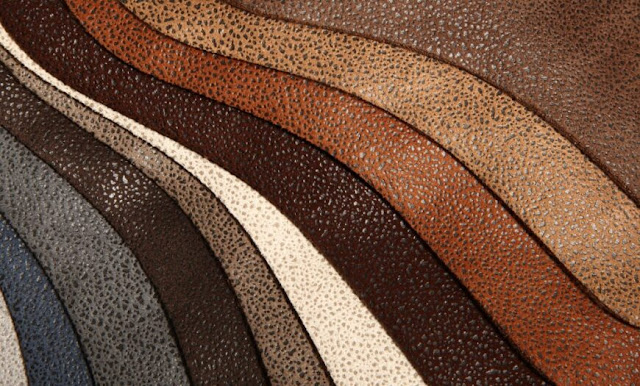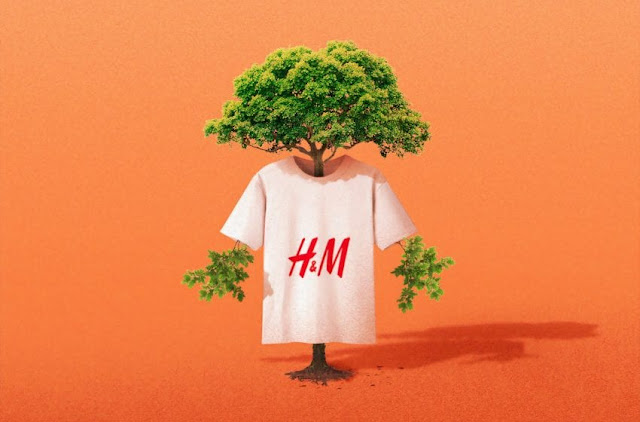by Ava Killbourn

As interest in sustainable, ethical and eco-friendly clothing has risen over the past decade, well-known brands and fashion houses are ditching animal products for “vegan” or “low-impact” options. One particular textile that has been at the center of this movement is leather, with non-animal-based alternatives becoming more common in everything from clothing and accessories to automotive and home furnishings. Infinium Global Research predicts that the vegan leather industry will be worth $89 billion by 2025 as concerns mount over the impact of traditional leather on the environment and demand for animal-free products soars. Sadly, the appeal of buzzwords like “vegan” and “cruelty-free” can mislead the conscious consumer into believing that they are making a more sustainable choice, as brands capitalize on a booming market without necessarily committing to the ideals behind those labels. When confronted with the huge array of textile options that mimic leather, how can we as consumers make an educated and informed choice?
The first option for leather is the original thing; animal skins that are prepared for use as fabric through a process called “tanning”. There are two ways that these animal skins can be tanned. The first is the most common, as well as the most environmentally destructive and ethically dubious. The road to these textiles starts at the slaughterhouse, where PETA estimates that more than a billion cows, pigs, goats, sheep, alligators, ostriches, kangaroos, dogs and cats are killed for their skins every year. The raising of these livestock is also one of the driving forces behind deforestation as well as one of the biggest emitters of greenhouse gases. Once ready for tanning, the hides are placed in a chromium salt bath. When disposed of, this highly toxic solution can decimate aquatic ecosystems, cause soil depletion, and induce respiratory issues in humans. The final product is a durable and long-lasting garment but burdened with great environmental and ethical cost.

There is an alternative tanning process called vegetable tanning that has prehistoric roots but is used by some modern eco-conscious brands. This process uses natural vegetable tannins to treat the leather rather than chromium salts, meaning they don’t poison the environment during the tanning process or when they are discarded.
Leather treated with natural vegetable tannins versus chromium salt
When selling real leather garments, brands can further hold themselves accountable by using tanneries evaluated by organizations such as the Leather Working Group, which rates them based on energy and water use, emissions, traceability and chemical input. Brands that ascribe to these low-impact processes, like London-based fashion house Baukjen, reclaim hides from animals raised for the food industry, encouraging a closed-loop system where nothing is wasted. Although these processes still require animal products, the environmental and ethical consequences are far fewer than traditional leather and provide a good, if not perfect, alternative for the consumer seeking the durability and heirloom potential of real leather.
Sustainable womenswear brand Baukjen’s "Lyle” leather biker jacket in Powder Pink, made with reclaimed hides and prepared with vegetable tannins
The second option for leather consumers is artificial textiles that mimic the look and feel of real animal leather. The most common leather alternatives are two types of plastic polymers: polyurethane (PU) and polyvinyl chloride (PVC). Although brands tout these options as a more sustainable alternative to real leather, the use of plastics has its own consequences. Clothing made from plastics takes hundreds of years to degrade and release toxic chemicals as they break down. They leach microplastics both during and after their wearable life, and it is estimated that synthetic fibers like those used in plastic leather alternatives are the biggest source of microplastic pollution in the ocean. Because the durability of leather alternatives is generally far inferior to their animal-based counterpart, they also cannot be used for decades and passed down as real leather pieces can. Ultimately, they end up in the landfill faster and degrade slower.

There are a few interesting developments in true plant-based textiles that mimic leather. Two particularly innovative examples are Piñatex, derived from pineapple leaves, and Mylo, from mycelium. Stella McCartney recently debuted an entire collection using vegetable-tanned Mylo, and Hugo Boss is using Piñatex on a new range of shoes. There are also textiles in the works made from apple, corn, mango, kombucha cultures and even agricultural waste. Though options for pieces that utilize these plant-based textiles are still scarce and somewhat price-exclusionary, they represent perhaps the best option for those seeking leather goods with the lowest possible environmental and ethical impact. Piñatex, a natural textile made from pineapple leaves that mimics leather A piece from Stella McCartney’s 2021 collection that uses Mylo, a natural textile made from mycelium that mimics leather Whichever option best suits your needs, it is important to remain conscious of the greenwashing efforts of brands who capitalize on changing markets in order to appear committed to the same ideals as their hopeful clientele. There are options for both real and vegan leather that are more harmful and less harmful than some of their counterparts. Regrettably, it comes down to the consumer to remain vigilant when considering a new leather piece and hold brands accountable for misleading terminology and woefully halfhearted attempts at sustainability.









Comments
Post a Comment